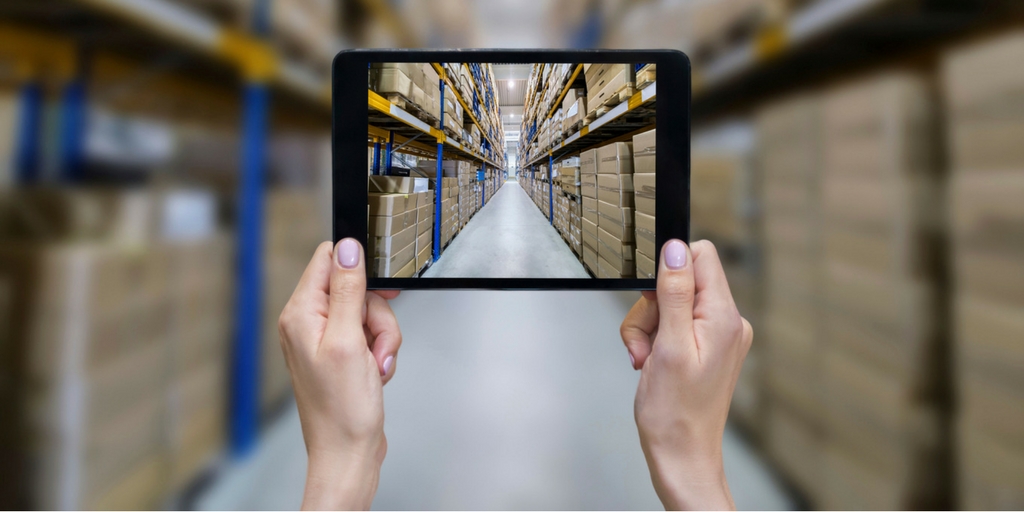
by Fronetics | Dec 15, 2016 | Blog, Content Marketing, Logistics, Marketing, Social Media, Supply Chain
Here are our 10 most-read social media posts of 2016.
Social media is no longer optional. Today, B2B and B2C companies need to be active on social media. Companies that aren’t are making a strategic mistake that will impact their bottom line.
At Fronetics we work with companies to create and execute social media strategies. Moreover, we serve as an educational resource for companies within the logistics and supply chain industry.
Here are the 10 most-read posts about social media from our blog in 2016.
A question we often get here at Fronetics is: How often should my business tweet? We explore this question and give you an answer. Read more.
Facebook Live offers businesses a new, creative platform for engaging customers — here’s how to use it. Read more.
When it excels at social media, a company’s opportunity for growth is as vast as the web itself. Today, even small businesses can compete shoulder to shoulder with their biggest competitors if leveraging social media properly. These four supply chain companies constantly post fresh, quality content to their social media accounts. Read more.
Social media facts collected from various studies, offer insight into how people and businesses are using social networking today. Read more.
Censorship is always a hot-button issue, and, when combined with social media, things can heat up even more. The topic is debated in law school classrooms, at dinner parties, and in courtrooms. What should be shared and written on social media? Should companies censor what their employees post? Read more.
One of the top social media sites for B2B marketers, Twitter can help businesses spread brand awareness and communicate with customers. Read more.
A cross-departmental social media team will improve your company’s social presence. Read more.
This is a guest post written by Tania Seary, founder of Procurious, the world’s first online social network for supply chain and procurement professionals. In the post Seary shares how Procurious has used social media to build Procurious. Read more.
When you are posting on social media could be as important as what you’re posting. Read more.
If your company is not participating in social media, you are at a disadvantage. Your customers, your employees, and your competitors are taking advantage of these technologies to conduct business in new, more efficient ways. Read more.


by Fronetics | Dec 14, 2016 | Blog, Content Marketing, Logistics, Marketing, Supply Chain

In 2016 88% of B2B marketers reported using content marketing to market their business, up by almost to 3% over 2015. B2B markets are increasingly using content marketing because they recognize that it an effective tool to increase brand awareness, and to attract, engage, and convert new customers. With 51% of B2B buyers relying on content research and to make B2B purchasing decisions than they did a year ago, businesses who aren’t using content marketing are missing out on opportunities that ultimately impact their bottom line.
Fronetics is a boutique marketing firm focused on the supply chain and logistics industries. We work with companies to create and execute data driven marketing strategies with the objectives of increasing brand awareness, positioning companies as thought leaders, driving meaningful engagement with prospects and customers, and helping companies to grow their business.
Every day we see the impact content marketing has on companies within the supply chain and logistics industries. One client, for example, has realized a 30% net increase in new customers since the implementation of their content marketing strategy.
We have pulled together our top 10 content marketing posts of 2016. We hope these will help you to develop and/or strengthen your content marketing strategy in the coming year.
Top 10 Content Marketing Posts of 2016
This is a guest post by Jennifer Cortez, Director, Marketing Communications, Transplace. Cortez discusses how Transplace, a North American non-asset-based provider offering manufacturers, retailers, chemical and consumer packaged goods companies the optimal blend of logistics technology and transportation management services, has used content marketing and she offers up 3 tips for creating valuable and compelling content. Read more.
We’ve pulled together 19 content marketing trends that companies within the logistics and supply chain industries should take note of. Read more.
3. How to Overcome Your Biggest Content Marketing Challenge
2016 reports produced by Content Marketing Institute and MarketingProfs, and sponsored by Brightcove outline the biggest challenges B2B and B2C companies face when implementing content marketing strategies. We discuss how you can overcome these strategies and be successful. Read more.
TotalTrax Inc., a provider of real-time vehicle, driver, and inventory tracking technologies for manufacturing and warehouse operations, worked with Fronetics to leverage content marketing to increase web traffic, generate high-quality leads, and, ultimately, grow business. Read more.
10 content marketing strategy statistics that underscore the importance of developing a clear content marketing strategy to advance your business goals. Read more.
Outsourcing content marketing can cost a fraction of what dedicating in-house resources would — and you’ll get better results. Read more.
Content marketing is one of the most effective ways to increase brand awareness, broaden your customer base, and grow your business. Yet of the 88% of B2B marketers using content marketing, only 30% feel their efforts are successful. Why do so many organizations feel they are failing? Simply put, they do not have a documented content marketing strategy in place. Read more.
Speak your boss’ language with metrics, statistics, and facts that articulate content marketing’s impact on customer acquisition and sales. Read more.
What is influencer marketing and how can supply chain companies use it to win over customers? Read more.
A blog post not only stays around longer than a print ad, it can better engage potential customers. Read more.


by Fronetics | Dec 13, 2016 | Blog, Content Marketing, Logistics, Marketing, Social Media, Supply Chain
Get the tools you need to create and implement a content marketing strategy that drives profitable customer action for your business.
Content marketing can be an incredibly effective tool for attracting customers and growing a business. But it ain’t easy. In fact, logistics and supply chain companies report creating and executing an effective content marketing strategy as one of their top challenges.
That’s why Fronetics created its Guide to Content Marketing for the Logistics & Supply Chain Industries. Newly updated to include even more helpful tips, tricks, and ideas, the guide offers step-by-step instructions for getting an effective content marketing program up and running.
If you are a DIY kind of person or are just looking to learn more about how to develop a modern-day marketing strategy for your business, this guide is a good place to start. Templates, lists, calendars, and more will walk you through the process of developing a strategy that aligns with your business goals.
Included in this guide is information regarding:
- Buyer personas
- Keyword development
- Content creation and distribution
- Social media participation
- Lead-nurturing workflows
- And more
Click the button below to download the new and improved guide and to get started creating a content marketing strategy that works for your business.

Related posts:

by Fronetics | Dec 8, 2016 | Blog, Content Marketing, Logistics, Marketing, Social Media, Strategy, Supply Chain
How 2 new developments have changed the world of marketing
The year 2017 is about to dawn, and with it marks a decade anniversary of the birth of two seismic changes in how people view the world around them. No doubt you’ve incorporated both of these changes into your daily life, but have you fully absorbed them into the way you conduct your business?
In supply chain and logistics businesses, the general answer is “no.” That’s a significant problem for a company’s long-term success, but it can be remedied.
Let’s look at the two world-changing phenomena, how rapidly they’ve reshaped the world, why they are crucial to your company, and steps you can take to fuse them into your business.
A new website is launched
It was just 10 years ago that a new website poked its head up on the internet, offering to the general public an online social network so people could keep in contact with friends and family. Originally designed as a private forum for college and high school students to connect online, but its founders thought perhaps it might catch on with the public, too.
In late 2006, when Facebook opened its website to anyone who wanted to sign on, it saw its users soar by 33%, to 8 million. But that was barely a blip compared to the social and business marketing revolution it has created worldwide. Now over 1.8 billion people use Facebook, and hundreds of millions more use other social media channels that have sprung up in its wake — Twitter, LinkedIn, Snap, Instagram, and many others.
For businesses, social media has opened up an entirely new way to find and interact with customers. It’s changed the traditional ground rules of marketing and advertising. And it’s created a completely new and sophisticated tool — big data — that provides unprecedented amounts of information about customers and potential customers. That information is valuable.
A new phone dials in
The second revolution is now literally in the hands of one quarter of the world’s population.
Around the time Facebook launched, Apple came out with its first foray into the emerging field of cellular phones. The iPhone was an instant hit, selling a little over 1 million phones in its debut year, 2007. It combined the functions of a smart cellphone with intuitive ways to connect to the internet. Rival technologies quickly followed suit. Today, an estimated 2.6 billion people worldwide use a smartphone.
Mobile communication, via smartphones, is now the dominant way that people access the internet. About 55% of people use their phones to surf the web. And while a decade ago they spent less than 30 minutes per day using their phone’s functions, now it’s around 3 hours per day. Here’s another thing to consider — most people have their cellphones on their person during all their waking hours, and they check it over 100 times a day.
For businesses, having a mobile phone strategy and a well-managed mobile presence is absolutely essential. When it’s working at full throttle, it’s populating the social media apps that people are checking dozens of times per day. It’s providing compelling content that they want to read; it’s building up name-brand recognition; and it’s growing brand loyalty.
Looking toward 2017
Every year the boundaries of social media and internet marketing get pushed. It is hard to find a consensus on what the dominant trend will be. Will Twitter dwindle and other social media platforms take its place? Some think that companies will need to be faster and smarter about creating content linked to whatever the hot topic of the day is. Others don’t see a dominate change on the horizon; instead incremental changes to what’s already online.
For supply chain and logistics companies that want to establish a foothold or build on an existing beachhead, the solutions lie in the new evolution of customer interaction, called content marketing.
The landscape changes ahead are hard to predict, but there are some reliable existing strategies to follow. Fronetics has put together a guide on how supply chain and logistics companies can formulate tactics to take advantage of the opportunities that a content marketing plan and a robust social media presence can create. Click below to download the guide.

Who knows what social innovations the next decade will spawn. If the past decade is any guide, another revolution is coming. Are you keeping pace?
Related posts:

by Elizabeth Hines | Dec 7, 2016 | Blog, Current Events, Strategy, Supply Chain
Regardless of Trump’s campaign promises, global trade and trade agreements are complex issues that can’t be solved with the wave of a tariff wand.
Trade was at the forefront of the 2016 presidential race, with both candidates putting the United States on a collision course with China. President-elect Donald Trump, of course, made massive tariff hikes one of the defining issues of his campaign.
In stark contrast to traditional Republican rhetoric, Trump vowed during his acceptance speech in July — while also promising to bring jobs back to Ohio, Pennsylvania, New York, Michigan, and “all of America” — “I am not going to let companies move to other countries, firing their employees along the way, without consequences. Not going to happen anymore.”
Although such language makes trade experts and economists balk, that line in particular earned the approval of both Democratic (72%) and Republican (61%) voters who listened to the speech as part of a focus group. If you have been directly affected by the manufacturing layoffs, it may be tempting to assume that waving the tariff wand and putting the screws on American companies will bring about a manufacturing renaissance in the United States.
The complex problem of global supply chains
The reality is, as countless experts caution, far from that simple, threatening instead to severely disrupt U.S. manufacturers that rely on global supply chains.
One of the bleakest assessments by Moody’s Analytics maintains hitting China and Mexico with tariffs of 45% and 35%, respectively — and assuming they do not retaliate with the same rates — would cause two million American workers to lose their jobs, throw the country into recession, and lead to another 1.5 million jobs never being created that otherwise would have been.
Besides the global implications of a trade war, imposing high tariffs on China, to which the United States sold $116 billion of goods in 2016 (including aircraft parts, semiconductors and automobiles) could have far-reaching consequences on the health of our high-value industries if China decides to hit back.
The law of unintended consequences
The law of unintended consequences was on display when the U.S. Commerce Department in 2012 slapped anti-dumping duties on Chinese solar panels after SolarWorld AG charged below-cost Chinese imports cost hurt the company’s U.S. production. In response to the 78% duty, China hit U.S. producers of polycrystalline silicon, the raw material for photovoltaic cells, with 57% duties.
As a result, a fast-growing industry gearing up to meet demand from Chinese solar panel makers took a significant hit. Hemlock Semiconductor in 2014 abandoned construction of a $1.5 billion new silicon plant, while REC Silicon in Moses Lake, Wash., halted production this year.
REC Chief Legal Officer Francine Sullivan commented in Fortune, the “necessity and value in putting on tariffs to protect solar panels in the U.S. was just not thought through. We’ve suffered enormous financial damage as a result of this.”
As I reviewed a variety of opinions for this piece, I came across two quotes that offer valid yet widely different perspectives on the issue:
First, here is Scott Paul, president of the Alliance for American Manufacturing, in Fortune:
“I don’t think [Trump] does our issue any favors by being so incredibly jingoistic and bombastic. But I believe there is widespread agreement. … There is something amiss with our economic relationship with China, and it’s past time that our government pushes back a little more forcefully.”
Secondly, Doug Oberhelman, chairman and CEO of Caterpillar and president of Business Roundtable, who has described higher tariffs as “very dangerous,” told the New York Times:
“We are 5% of the world population. Ninety-five percent of our potential customers are elsewhere. We’ve got to learn and figure out how to deal with that.”
Regardless of which viewpoint coincides with your own, it is safe to say trade and trade agreements are enormously complex issues that hardly fit into the narrative of populist appeal. An outright trade war will benefit no one.
What is your take on this issue?
This post originally appeared on EBN online.

by Jennifer Hart Yim | Dec 6, 2016 | Big Data, Blog, Data/Analytics, Leadership, Logistics, Strategy, Supply Chain, Transportation & Trucking, Warehousing & Materials Handling
Supply chain leaders must be ready to implement big data in order to continuously improve.
This guest post comes to us from Adam Robinson, director of marketing for Cerasis, a top freight logistics company and truckload freight broker.
Supply chain leaders are enthralled with the idea of using big data, but they tend to fail to understand how to disseminate big data in their organization properly. True, they may know how to roll out big data in a single warehouse, or they may have heard their competitors used branded systems for implementing this new technology. However, the fundamental problem remains.
Supply chain leaders must be ready to implement big data and leverage it to improve their companies without any delay or inhibition. This may sound impossible and frightening, but they must only understand how big data always goes back to these two, simple principles of measurement: review and action.
Ask traditional questions, and let big data provide answers.
The most common complaint of newer companies using big data analytics capabilities tends to revolve around traditional questions of business strategy. Consider the following elements explains John Richardson of Inbound Logistics, that impact business strategy.
- Increasing order efficiency.
- Demand forecasts.
- The quantity of each product.
- Inventory location and management.
- Raw material suppliers and logistics.
- Transportation modes used in procurement and shipping.
- Distribution of goods prior to purchase.
- Demand fluctuations.
Each of these elements more traditionally handles by outsourcing analysis of processes to supply chain consultant. This is actually where the concept of third-party logistics providers involved. However, rapid growth and diversification of products are making shippers, manufacturers, and suppliers rethink their business strategy. In other words, consumers can get practically anything they want at a moment’s notice, and more consumers are expressing a willingness to wait for a product a few days if free shipping is a possibility. So, this need to adapt operations reflects the common concerns of traditional customers and supply chain entities. However, there is a distinction.
Previously, these entities only needed to focus on their local demographic for ensuring continued stability. But the rise of the internet has given consumers and everyone else the ability to access any product from any seller and any place on the globe. This is a traditional business strategy, and it is essential that the modern supply chain is willing to use big data all operations to create a more positive result than consumers, stakeholders or government organization ever needed before.
Performance measurement and management.
As explained in a previous blog post, continuous improvement in an organization can be achieved through the use of performance measurement tools via big data. Mostly, this reflects the skills and actual working capacity of employees. Since employees represent one of the largest expenses an organization may face.
Having the best staff members available can mean the difference between success or failure in a company. Furthermore, big data can help employees understand what they do and do not need to do in order to improve their performance scores. This will also help to prevent oversight from managers and keep all employees on track to complete their responsibilities as assigned.
Performance measurement does not have to be limited to the performance of employees either. It can be expanded to identify poorly performing machines, or it can be used to isolate inefficiencies in collaboration with suppliers or vendors. Ultimately, performance measurement is a metaphor for tracking any metric in the course of the supply chain, but it’s key to being effective is found in transferring the insights gleaned from big data into actionable results.
For example the operational efficiency of a given loading is directly related to how quickly pickers are able to fulfill orders and move them onto the dock. Obviously trucks can only be loaded so fast; what is the number of pickers appropriate for the current workload, or which route through the factory is adding an extra 20 minutes to each worker’s duties?
These questions illustrate that the most insignificant details can be driving forces of inefficiency in the supply chain. But they represent opportunities for continuous improvement. Changes in the design or layout of the warehouse or alterations to the truck schedule may require changing the duties of a certain worker at a moment’s notice. Essentially, the worker must be able to access continuous data measurements on all factors affecting his or her responsibilities.
Supply chain leaders need to focus on continuous improvement.
Continuous improvement is a complex notion. It is based on hundreds, if not hundreds of thousands, of individual metrics from various collection points and analyzed in real time. All of this reflects a very large volume of data. It can be digested and broken down into usable bits, much like the biological processes of the stomach making it essential to surviving the coming season.
This comparison is much more than a metaphor; it is the real issue being faced by supply chain entities and their leaders. Supply chain leaders must use big data to gather insight and create quantifiable measures of performance and functionality across their enterprises on a recurring, frequent and immediate basis.
Related posts:









